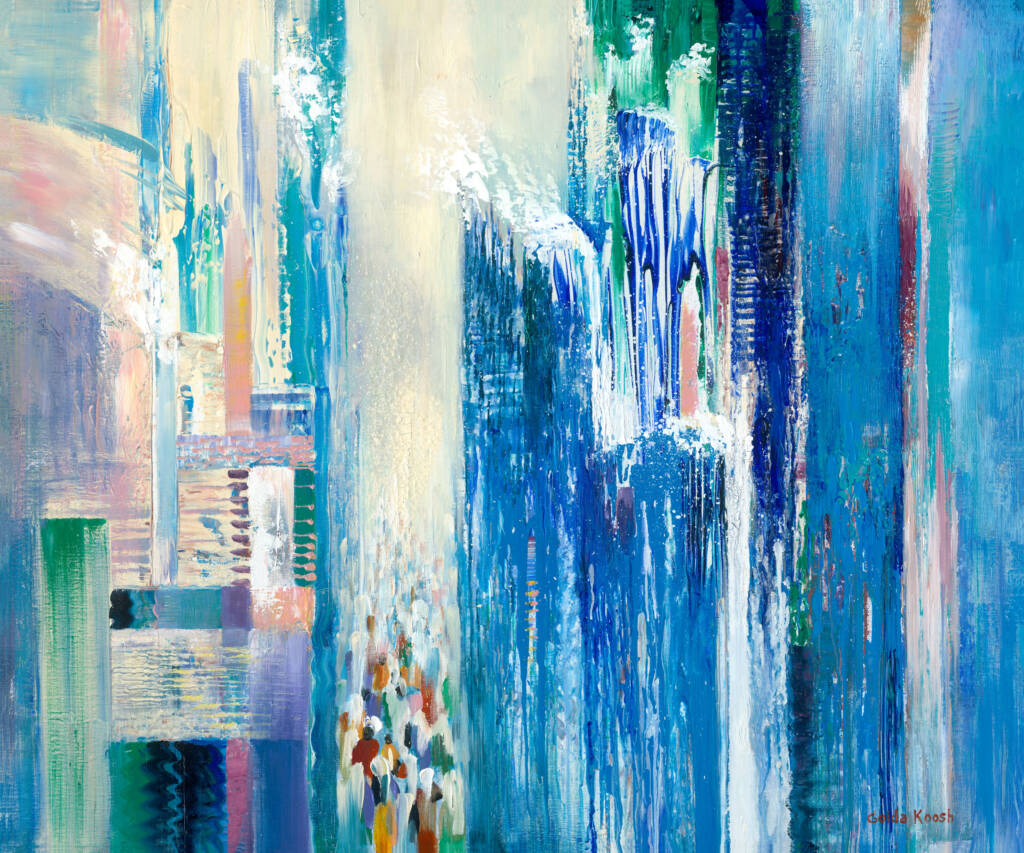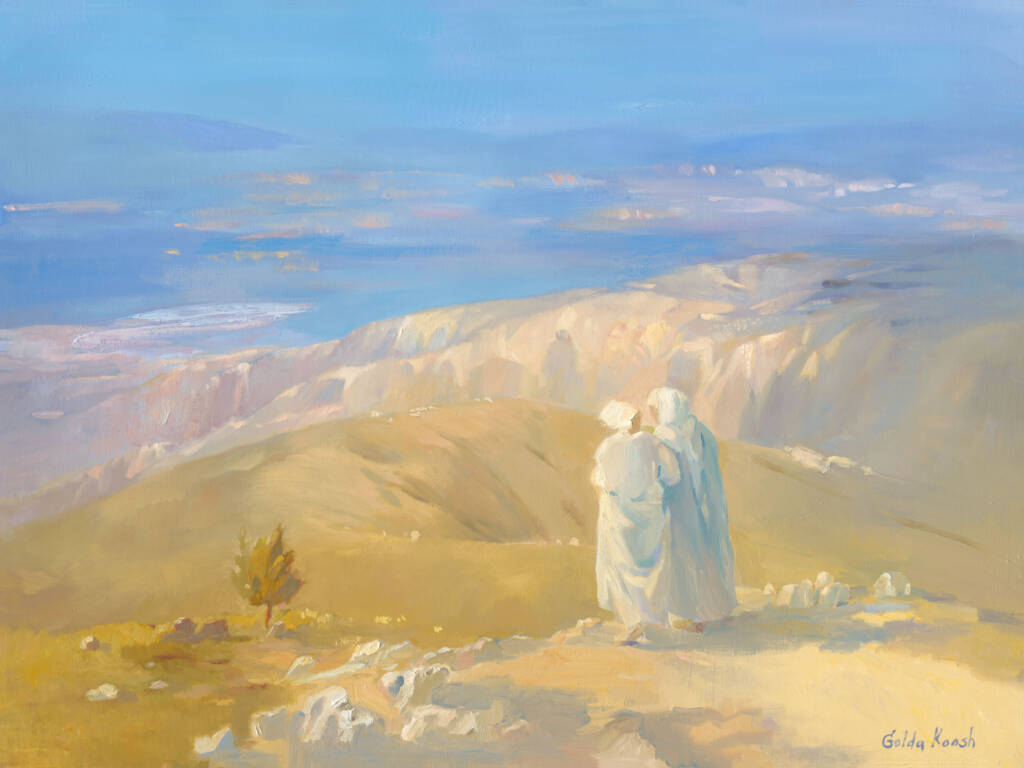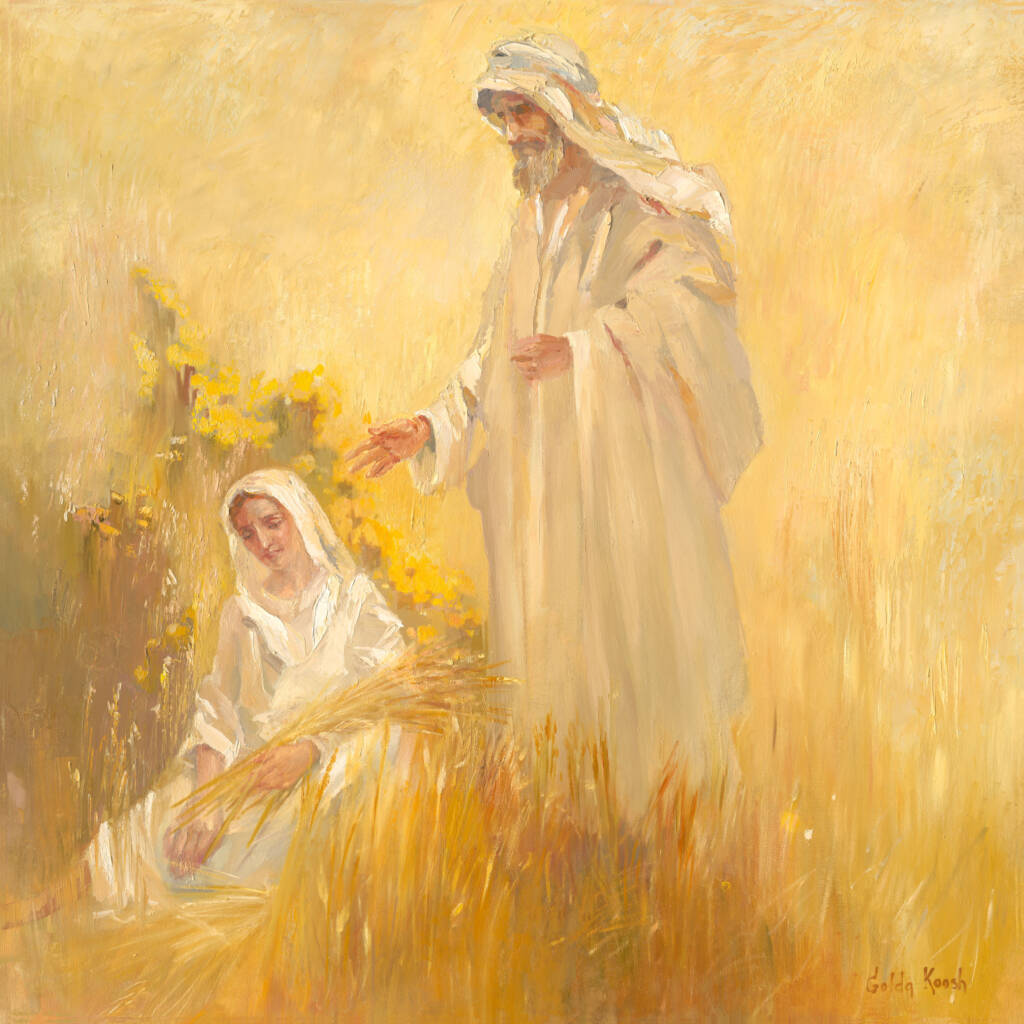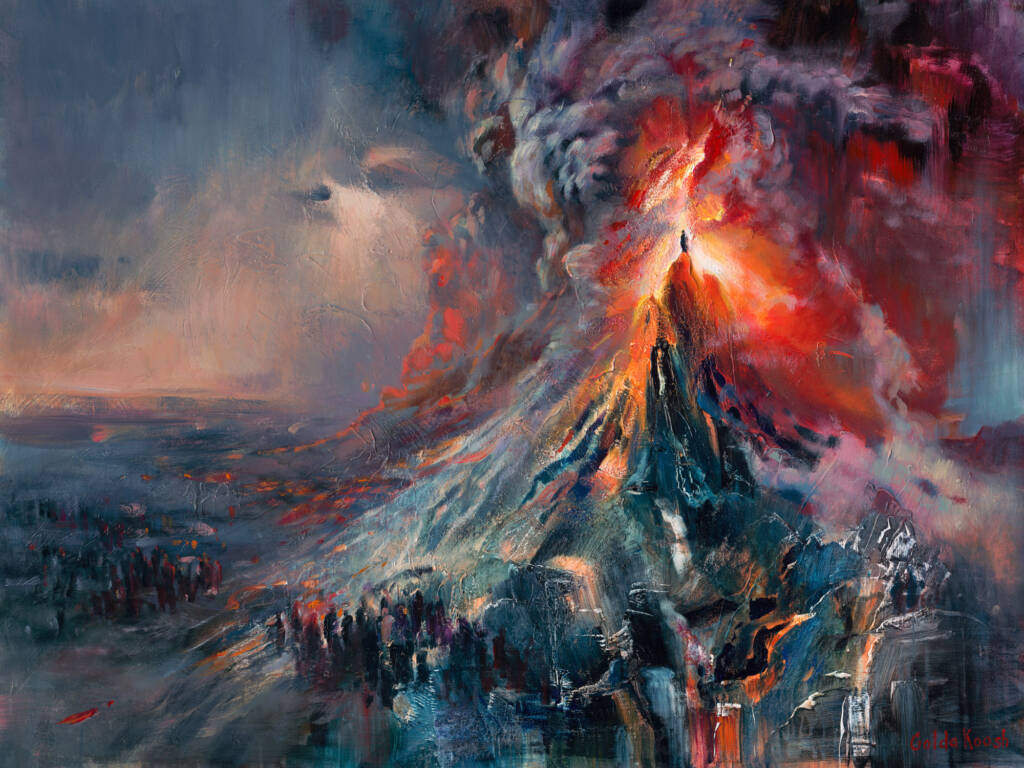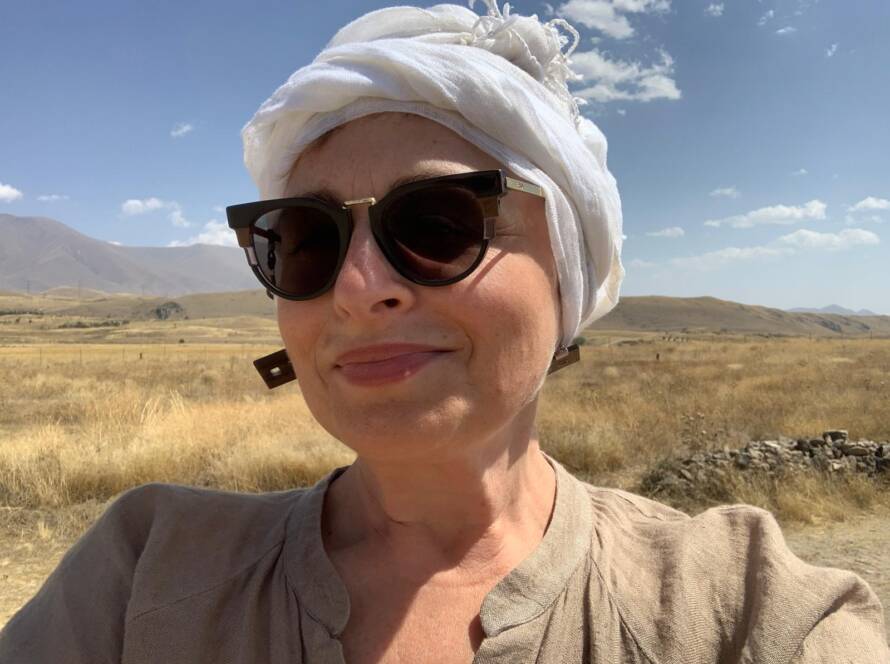In today’s modern world, where speed and innovation often overshadow tradition, biblical art serves as a timeless bridge to the past. For Golda Koosh, a contemporary Israeli artist, this form of artistic expression is more than a tribute to heritage; it is a living, breathing dialogue between ancient texts and the present moment. Her work offers viewers a visual connection to the spiritual and cultural foundations of the Jewish people. Through her canvases, the stories of the Torah take on new life, resonating with collectors and admirers around the world
Reimagining the Desert: Arabica Nights
One standout piece in Golda Koosh’s collection is Arabica Nights – the Journey of a Coffee Bean Through the Middle Eastern Spice Trails. Though this work was commissioned for a company in Beer Sheva, its depth goes far beyond commercial intent. Beer Sheva, often considered the modern capital of the Negev desert, is layered with history and meaning. It is a place where biblical figures walked, where merchants carried goods and wisdom across arid lands, and where the scent of frankincense and myrrh once hung in the air.
In Arabica Nights, Koosh brings this heritage to life through warm, earthy tones and flowing composition. The painting subtly references biblical journeys, Abraham’s sojourns, Hagar’s exile, and the prophet Elijah’s travels through the desert. These stories lie just beneath the surface, making the artwork a compelling piece of biblical art that speaks to both spiritual legacy and modern appreciation.
The Splitting of the Red Sea
Golda Koosh’s biblical art often focuses on pivotal moments of transformation. Her series on the Splitting of the Red Sea is a powerful example. With dramatic brushwork and a palette that moves between stormy blues and radiant golds, these paintings depict the Jewish people standing between walls of water, walking toward an uncertain future with unwavering faith.
These works are not merely historical representations; they are meditations on resilience, divine protection, and collective courage. One can almost hear the roar of the sea and feel the tension in the air as the Israelites cross on dry land. For Koosh, this biblical moment remains deeply relevant today. It serves as a visual reminder that even in times of danger and uncertainty, miracles can and do happen.
Ruth and Naomi: Loyalty and Love in Biblical Art
Another important theme in Koosh’s biblical art is the story of Ruth and Naomi. In her depiction of these two women, Koosh captures a moment of intimacy, connection, and unwavering devotion. The painting is soft and compassionate, filled with the warmth of a shared journey and the strength of spiritual kinship.
Koosh paints them as they stand together, looking over the fields of Moab, their garments flowing gently in the breeze. This portrayal of Ruth’s famous vow, “Where you go, I will go,” becomes more than words. It becomes a visible symbol of faith, sacrifice, and deep-rooted love.
In her companion piece, Ruth and Boaz in the Field, Koosh continues the narrative. She portrays the couple’s first meeting amid golden wheat fields, highlighting the values of kindness, dignity, and divine guidance. Boaz’s generosity and Ruth’s humility are delicately expressed through posture and color. Here again, biblical history becomes profoundly human, approachable, and deeply touching.
Mount Sinai and the Divine Revelation
No exploration of biblical art would be complete without reference to Mount Sinai. In her breathtaking painting of Moses receiving the Ten Commandments, Koosh channels the majesty and gravity of that sacred moment. A powerful, glowing red light surrounds Moses, who stands alone at the summit, a figure of awe and humility.
The scene is both dramatic and reverent. Viewers can almost feel the thunder, see the lightning, and hear the voice of G-d etched into stone. Koosh balances the grandeur of revelation with the quiet responsibility that comes with divine law. It is a painting that commands reflection, reminding viewers of the covenant that continues to shape Jewish identity to this day.
Why Biblical Art Still Matters
Golda Koosh’s body of work demonstrates that biblical art is far from outdated. On the contrary, it is essential. In her hands, these ancient stories are not locked away in sacred texts. Instead, they are brought into homes, galleries, and hearts. Alive and pulsing with meaning.
Her paintings inspire dialogue between generations. They bring biblical lessons into modern conversations. They offer both beauty and depth, inviting viewers to explore not only the stories of the past but also their own place within that continuum of faith.
In a world hungry for connection, Koosh’s biblical art offers a spiritual anchor. It reminds us of who we are, where we come from, and the values that endure.
Through bold colors, symbolic detail, and reverent storytelling, Golda Koosh elevates biblical narratives into fine art. Her work stands as a testament to the richness of Jewish tradition and the enduring power of sacred imagery in contemporary life.




